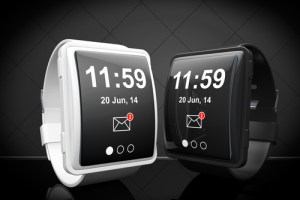Building An App? Learn Some Tricks From The Best Apps Available



A large enterprise might be headquartered in a skyscraper versus a small business that’s run out of a strip mall, but once they have mobile apps, customers start to look at companies of all sizes with very similar expectations. They might understand, for instance, that a mom and pop shop won't

Salesforce Canada
A large enterprise might be headquartered in a skyscraper versus a small business that’s run out of a strip mall, but once they have mobile apps, customers start to look at companies of all sizes with very similar expectations.
They might understand, for instance, that a mom and pop shop won’t have the same number of associates running around as a major department store, but in both cases they feel it should be easy to find what they need on a mobile app.
If a customer presses a button on an app and nothing works, it doesn’t matter if the company behind it is big or small. The same thing happens: the customer deletes it.
Apps that drain a smartphone battery, apps that need to constantly be updated — these are all issues where customers might be surprisingly unforgiving.
This is partly because, in most industries, there are plenty of competitive alternatives in the app stores to choose from instead.
The bigger reason, however, is that the basic foundations for building a great app experience are now available to everyone.
Whereas only the big firms with lots of financial resources could have afforded to hire a team of highly experienced developers in the past, low-code development platforms have democratized the opportunity to create apps across companies of all sizes.
In fact, so many organizations have capitalized on this opportunity that the bar for a great app experience has already been set in many product and service categories. These include travel, shopping, fitness, productivity and more. There is also a wealth of opportunities to create employee-facing apps, too.
If your firm is new to the mobile app space, your first move should be similar to what you’d do when a new competitor opens up a physical location nearby: discreetly make a visit, look at what they might be doing differently or better than you, and benchmark yourself accordingly. If you don’t, you can be sure your customers will!
On the other hand, don’t necessarily feel you have to keep everything about your mobile app project behind the scenes. Involve your customers via your other digital and social channels like your blog, Twitter or Facebook.
This can be a good idea because you’ll have a better sense of what will drive people to actually download and install your app, as well as use it on a regular basis.
Some of what you hear might be very specific to the products, services or sector in which you operate, but there are a few baseline qualities in most of the best mobile apps that are pretty consistent across the board:
1. Keep it quick
Of all the technical details you need to think about in making a mobile app, speed is number one.
Customers will not wait forever for an app to install on their phone. (And by “forever,” we mean more than about 60 seconds).
Customers will not wait more than about 10 seconds for your app to launch and begin using it.
Customers will not wait more than about five seconds for an app to indicate that they have pressed a button or taken some other kind of action that requires it to respond in a particular way.
It’s not that customers are ridiculously impatient or unreasonable. It’s just that one of the reasons they showed interest in an app in the first place was the promise of convenience. And convenience usually means being faster than doing something in another way.
2. Be a helpful host
Even if your mobile app is highly sophisticated, it should be simple to use to the average customer. And even the average customer will probably want to be given a guided tour.
In many of the best apps, for example, the first thing you see after launching it for the first time is a series of highlights or animated prompts that indicate how to do basic things.
This could include how to sign in if the app requires an account, how to use the search tool and the other most common features.
Not everyone will want to have this kind of tour, though, so make sure you don’t force them through it by offering buttons to “continue” or “skip.”
If there are multiple steps required to set them up in the app, indicate what can be done later and let them get value out of it as quickly as possible.
3. Answer all privacy and security questions up front
Don’t assume customers will intuitively know how you collect, manage and store their personal data.
App stores, industries and governments have all been putting rules in place about how transparent companies need to be regarding the privacy and security of their tools, including mobile apps. Err on the side of being crystal-clear from the outset.
Make sure you have a link to your privacy policy early on in the process of onboarding someone to your mobile app.
If you’re offering functionality that may put them at risk (like making an e-commerce purchase through the app, for instance), make mention of any ways in which you’re ensuring security based on industry best practices.
4. Let them opt into (or out of) the rest of your omnichannel experience
Just because someone has downloaded your app, that doesn’t mean they want to be added to your email list.
Even if they like your app, they might not want to get constant notifications popping up on their smartphone.
You may have great ideas of new features or updates to your app, but customers should have a degree of choice in whether they adopt them.
Too many mobile apps establish their customer preferences by default — where, just by installing the app, you’ve tacitly agreed to opt into everything.
This isn’t a great way to start a new relationship (or to nurture one, if they’ve already become a customer through a different channel).
At the very least, the tools to update or change their preferences for everything that happens to them as a user of the app should be easy to find and complete.
Your mobile app will no doubt undergo a series of transformations the longer it’s available to customers, and that’s a good thing. Keep a mindset of continuous improvement, and your app may eventually become the one that companies following in your footsteps look to when they’re benchmarking their own.


















